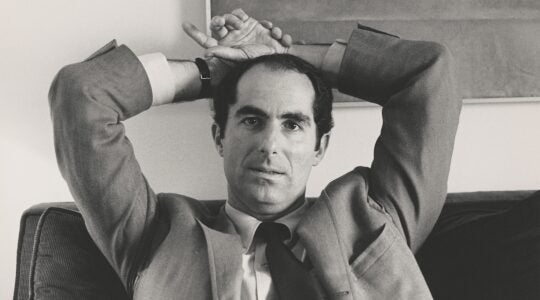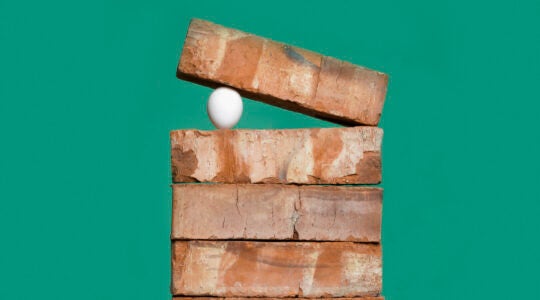“How do you know that you are a boy?” asks the father of a trans child, knowing that the answer can’t possibly be the same as his own visual confirmation of masculine identity. “I just am,” answers the child. It is the simplicity of his son’s response that guides the father to the realization that his own inability to perceive gender beyond the physical is exactly what make him cisgender and not trans. Sometimes, what we don’t understand is much more informative than what we think we know.
The Talmud teaches “Accustom your tongue to say: I do not know,” as a way of preserving credibility. We are even encouraged to frame knowing that we don’t know, עד דלא ידע, as the highest level of knowledge.
Tradition highlights this through the term used for a rabbinic scholar, a talmid chachum. “Talmid” means student and “chachum” means wise. By calling the scholar a student, it teaches us that if we don’t see ourselves first as learners, then we will never be available to acquire true wisdom.
Sometimes, what we don’t understand is much more informative than what we think we know.
When King Ptolemy of Egypt brought together 72 elders and told them separately to translate the Torah, God inspired each of them to alter the verse, “Let us make man in Our image,” (Genesis 1:26) to “I shall make man in an image.” The “us” in this verse is commonly interpreted as an invitation to the angels to participate in creation. To prevent the verse from being mistakenly read as evidence for multiple gods, God inspired the elders to translate it differently.
Rashi asks why, if the verse is so easily misunderstood, did God write it in this way to begin with? He answers that it comes to teach us to be humble even when we are confident in our knowledge of the world. The deeper teaching here is that it is specifically in situations where we are forced to question our understanding of the world that we must humble ourselves in order to to be open to receive truth.
It is specifically in situations where we are forced to question our understanding of the world that we must humble ourselves.
The Ramal (19th Century Ukraine) writes that this verse from Genesis alludes to a verse from Psalms 118: “The stone the builders despised has become the cornerstone.” The first word, stone (אבן), is an acronym formed by the words “Let us make man.” The Chida (18th Century Israel) says that this unwanted stone is a reference to Ruth, who many mistakenly assumed not to be Jewish because she was from Moav. Yet later in life, she is given a special seat in the Holy Temple built by her great-great-grandson, the King of Israel, Shlomo. Perhaps God is inviting us to emulate God’s humility and gently reminding us how wrong and unaware we really are, especially when we are arrogant.
The commentaries point out that the most beautiful stone is chosen as the cornerstone of the Temple because it can then be seen and appreciated from two sides. Similarly, the Ten Commandments were carved all the way through the two stone tablets, but miraculously appeared the same from both sides.
We read the story of Ruth on Shavuot to remind us that if we really want to be able to see, understand, and appreciate the beauty of Torah, then we need to be able to see it from the other side as well.
If we don’t understand gender variations maybe we can … hold the space of not knowing with humility and love.
Moses was introduced to God by the sneh, the small burning bush and accepted the Torah on the lowly mountain of Sinai. It was because he was the humblest of people that he was able hold the Torah and serve as the shepherd of the Stone of Israel.
When we love something we try to understand it and see it from the other’s perspective. If we don’t understand gender variations maybe we can reach out, listen, and hold the space of not knowing with humility and love.
This idea is illustrated with the following story told of Rav Meir Simcha of Dvinsk, known as the Ohr Somayach: Two Yeshivah students were struggling with a particularly difficult Talmudic commentary and approached the rabbi for help. He told the students to pause from learning and pray for more love of the Torah.
If we have a greater love for the Torah, then we will naturally understand it better.
One of the students asked curiously, “Once we are going to pray, why don’t we just pray for the answer to our question?” The rabbi explained that the more you love something the greater your sensitivity to and awareness of its specific needs. If we have a greater love for the Torah, then we will naturally understand it better, just as a true friend knows the needs of another.
Onkelos posits that the word stone (אבן), is an abbreviated form of the Hebrew words for father and son (אב–בן). The Talmud often reads “children” homilleticlty as “builders.” Tradition has it that the third Temple will be built, in part, from the stones of the sacred spaces we construct, rebuilding God’s house out of love.
We pray, “Return us, Father, to your Torah,” and the prophet tells us that we will return through our children. There are things parents can teach their children, and clearly there are things children can teach us. If we want to receive the Torah we need to love all of God’s children more than we love our false sense of knowing.
Rabbi Mike Moskowitz is the Scholar-in-Residence for Trans and Queer Jewish Studies at Congregation Beth Simchat Torah.
Posts are contributed by third parties. The opinions and facts in them are presented solely by the authors and JOFA assumes no responsibility for them.
If you’re interested in writing for JOFA’s blog contact shira@jofa.org. For more about JOFA like us on Facebook or visit our website.
The New York Jewish Week brings you the stories behind the headlines, keeping you connected to Jewish life in New York. Help sustain the reporting you trust by donating today.




